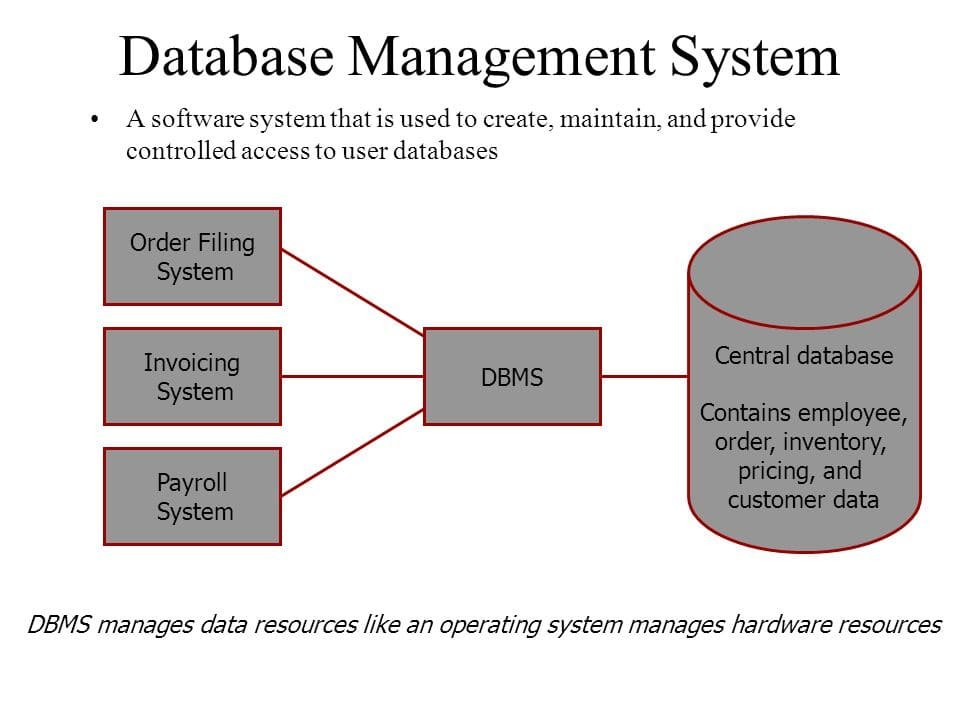Introduction
APPSGATE Technology is a software development company in Dubai that provides educational institutions with comprehensive solutions through their School Management System ERP. With a commitment to continuous updates and support, the system remains up-to-date with the latest technology trends and is equipped to meet evolving educational needs. The power of integration through the APPSGATE School Management System ERP extends beyond academic management.
The importance of a school management system andesign school management system database
Integrating a School Management System ERP such as the one provided by APPSGATE Technology can greatly improve inventory management and procurement processes. The system allows for efficient data management and reporting with a centralized database, making it easy to track inventory and ensure that essential supplies are always available, minimizing the risk of stockouts. Automation of procurement processes also streamlines the purchasing of necessary items saving time and reducing the chances of errors. The School Management System ERP developed by APPSGATE Technology offers a fully integrated ERP system, Odoo, which extends beyond academic management..
Read more Taking Education to the Cloud: Cloud School Management Systems
Understanding the Needs of Your School
APPSGATE Technology, a Dubai-based software development company, offers a School Management System ERP that addresses the comprehensive needs of educational institutions. The system is designed to keep up with the latest technology trends and evolving educational requirements. An integrated School Management System ERP, such as the one provided by APPSGATE, improves inventory management and procurement processes, efficiently manages data, and ensures operational excellence.
Identifying the requirements for the school management system
The school management system should be designed to meet the specific requirements of the educational institution. Some of the key requirements include a centralized database for storing and managing student data, academic history records, and financial information. A well-designed database can help manage inventory and procurement processes more efficiently, allowing for easy tracking and ensuring essential supplies are always available. It can also streamline the student admission process, allowing schools to enroll students quickly and easily.
Read more Ensuring Safety with the Best School Visitor Management System
Defining the Database Requirements
To ensure the smooth functioning of a School Management System ERP, it is imperative to define the necessary database requirements. This involves determining the required database structure and relationships, as well as deciding on data types and constraints. The database structure should allow for the storage and management of student data, academic records, and financial information in a centralized location. It should also be designed to streamline admission processes, manage payments, and track expenses. A well-designed database can significantly improve inventory management, optimize financial resources, and enhance operational efficiency.
Determining the required database structure and relationships
When designing a database for a School Management System ERP, it is crucial to consider the relationships between different data entities carefully. The database should allow for the management of student and teacher data, course information, financial records, and administrative data. A well-designed database will have clear and concise relationships, ensuring that the data is easily retrievable and manageable.
Read more Modernizing Education: The School Management System in the UAE
Deciding on the data types and constraints
The next step in designing a database for a School Management System ERP is to determine the data types and constraints. This involves deciding what type of data should be stored in the database, as well as the constraints that should be imposed on this data. For example, it may be necessary to impose constraints on certain fields to ensure data accuracy, such as requiring a valid email address for each student or teacher account. It is also essential to define the data types of each field, such as string, integer, or date. By carefully considering these factors, a well-designed database can be created that will support the needs of the educational institution and streamline processes effectively.
Read more Developing the Best School Management System with Core PHP

Choosing a Database Management System
When designing a School Management System ERP, it is essential to choose the right Database Management System (DBMS) to ensure data is stored, organized, and managed correctly. In selecting the appropriate DBMS, several factors must be considered to create an optimized database structure.
Factors to consider when choosing a DBMS
To ensure the correct and efficient management of data, the following are key considerations when choosing a DBMS:
- Usability: The database system must be user-friendly and easy to understand.
- Visualisation and Reporting: The system should offer an excellent platform for data visualization and reporting, making it easier to interpret, analyze and make informed decisions.
- Security: It is important to ensure that the system complies with security regulations and guidelines to avoid data breaches and unauthorized access.
- Functionality: The DBMS must possess all key features necessary for the successful management of educational data related to students, teachers and administration.
- Scalability: The DBMS must be scalable to accommodate the growth of the educational institution.
- Technical support: The presence of a solid technical support team is vital for the effective functioning of the system.
- Customization: The system should be designed in a way that allows customization to suit the needs of the educational institution.
- Cost: The cost of setup and maintenance must be taken into account when selecting the DBMS.
Read more The Advanced Features of a School Management System
Designing the Database Schema
The process of designing an effective database schema
Designing the database schema is an essential step in data management. The process involves creating a structure that aligns with the specific needs of the organization. The first step in this process is to select the appropriate database management system (DBMS). When selecting a DBMS, several factors need to be considered, such as usability, security, functionality, scalability, technical support, customization, and cost.
Once an appropriate DBMS has been selected, the next step is to create the necessary tables and relationships. Normalization is an essential concept to understand in table design as it helps prevent invalid data from being entered into the database. The relational model is used to create relationships between tables, which are represented by primary and foreign keys.
Creating the necessary tables and relationships
To create an effective database schema, it is necessary to identify the relevant entities and relationships in the organization. This involves breaking down the organization’s processes into smaller, more manageable parts. Each entity should be represented by a separate table in the database, with relationships established between tables using primary and foreign keys. Careful consideration should be given to defining the relationships to ensure data consistency and integrity.
Proper normalization is an essential aspect of table design, as it helps improve data quality and reduce redundancy. When designing tables, the data should be broken down into its smallest logical parts, and each part should be represented by a separate field. This approach enables efficient data retrieval and analysis, which is crucial for informative reporting.
Read more All You Need to Know About School Management Systems

Implementing the Database
Creating the database and importing data
To implement the school management system, it is essential to create a database schema that aligns with the organization’s specific needs. The first step in this process involves selecting an appropriate Database Management System (DBMS) that meets the usability, security, functionality, scalability, technical support, customization, and cost requirements. Once the DBMS has been selected, it’s time to create the necessary tables and relationships using the relational model. The tables represent the entities and the relationships between them are established through primary and foreign keys.
Proper normalization is crucial when designing tables to ensure consistency and integrity. It’s important to break down data into its smallest logical parts, with each part represented by a separate field. The resulting tables enable efficient data retrieval and analysis, which is essential for reporting purposes.
After designing the database schema, the next step is to import data. The best practice is to create mock data that represents the various entities in the organization. This will enable testing of the system’s functionality and ensure that it aligns with the specific needs of the school.
Read more Analyzing the Pros and Cons of School Management Systems
Maintaining the Database
Regular maintenance tasks and best practices for database management
To keep a database system running smoothly, it is essential to implement best practices for database maintenance. Regular backups are critical to protect against hardware failures, accidental data deletions, or any unforeseen events that may lead to data loss. Database reindexing, update statistics, and defragmenting indexes are essential to keep the database running efficiently.
When designing tables, proper normalization is crucial to ensure consistency and integrity. Data should be broken down into its smallest logical parts, with each part represented by a separate field. Additionally, monitoring performance, optimizing indexes, and adhering to security measures are necessary steps to establish a solid foundation for database management.
Read more Enhancing Security with a Visitor Management System for Schools
Conclusion
Recap of the key takeaways and next steps.
Maintaining the school management system’s database is crucial to ensuring a smooth functioning software system. Regular maintenance tasks, like backups and optimization, are essential to prevent data loss and enhance efficiency. Proper normalization when designing tables, monitoring performance, and implementing security measures ensure data integrity and consistency. To implement a school management system, the schema should align with the school’s needs, with entities and relationships established through primary and foreign keys. Mock data import is crucial for testing system functionality.
Frequently Asked Questions
What is the database management system of a school?
The database management system of a school is a software solution that organizes, stores, and manages various data related to the school, including student information, academic records, and administrative details. It provides a structured framework for efficient data retrieval and manipulation.
How do you create a database management system?
Creating a database management system involves defining the data structure, relationships, and constraints. It requires selecting an appropriate database management system (e.g., MySQL, PostgreSQL) and designing tables to store different types of information. Queries and interfaces are then developed for data retrieval and manipulation.
How to create a student database management system?
To create a student database management system, define the specific requirements for storing and managing student information. Design a database schema that includes tables for student details, academic records, and any other relevant information. Implement the schema using a chosen database management system and develop interfaces for user interaction.
How can a database be used in school?
A database in a school can be used for various purposes, including:
- Managing student information: Storing and organizing details such as names, addresses, and contact information.
- Academic records: Tracking student grades, attendance, and other academic achievements.
- Administrative tasks: Handling staff details, payroll, and other administrative functions.
Sources





No comment